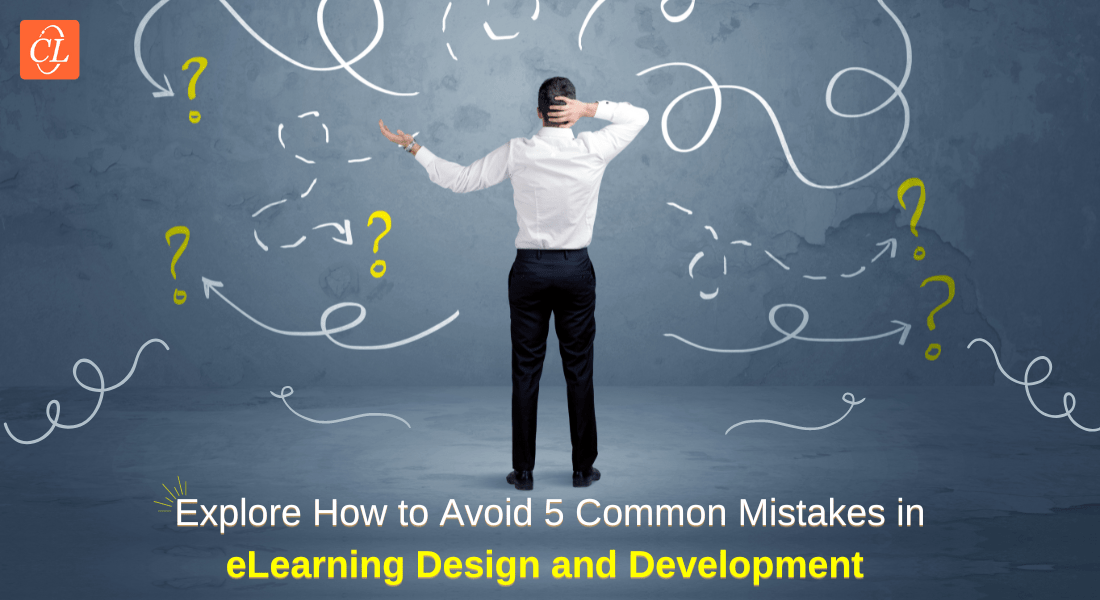4 Considerations to Make When Applying Modality Principle for eLearning Development

The modality principle, a concept popularized by the cognitive psychologist, Richard Mayer, has been around since the mid-90s and is an essential element when considering effective rapid eLearning design and development.
For those wondering what the modality principle, here is the definition –
The modality principle states that learning is best achieved when the learning material is presented in a multimedia format. That is, using multiple modalities (e.g., audio, visual, and text) to ensure that learners can process the information in a variety of ways.
In other terms, modality principle, also known as the “Modality Effect”, is the idea that learners are more likely to retain information when it is presented in multiple sensory formats. By utilizing this principle, learning designers and developers can create courses that are both effective and accessible to learners of all levels and abilities.
Wondering What Considerations to Make When Applying Modality Principle for eLearning Development?
Here are some –- Explore the types of modalities available.
- Know your learners
- Identify the best-suited interactivity
- Consider the learner abilities
Let us try to understand what makes it important to apply the modality principle in rapid eLearning design and development –
Why is it Important to Apply the Modality Principle to Rapid eLearning?
Well, firstly, it helps to ensure that learners are exposed to multiple types of information. This includes verbal information, diagrams, images, and other visuals, which can help make the eLearning content more engaging and easier to digest and understand.
Secondly, it can help reduce cognitive load, which is the amount of effort and energy that a learner needs in order to process and understand the material. By providing multiple modalities, learners can take in the training provided in a more efficient and effective manner. This also helps to ensure that the learning is more meaningful and memorable, and it thus helps improve the learners’ performance.
Finally, applying the modality principle can also help make learning immersive so the learners are engaged and more interested. By providing a variety of ways to process the material, the learner is more likely to stay focused and engaged in the content.
Putting it all together, it can be said that by applying modality principle in rapid eLearning design and development, it is possible to create effective, engaging, and interactive online learning experiences.
Explore how scenario-based learning helps increase learner engagement
Now that you understand the importance of the modality principle in rapid eLearning design and development, let us discuss the different considerations that eLearning developers have to make when applying the modality principle to build an eLearning module –
Considerations When Applying Modality Principle for eLearning Development
Explore the types of modalities available. When applying the modality principle to eLearning design and development, designers should consider the various types of modalities available to them. Visual modalities, such as animations, graphics, and videos, are often effective in helping learners retain information. Audio modalities, such as podcasts and audio recordings, can be helpful in reinforcing key concepts and providing additional context. Textual modalities, such as text-based interactive materials, can help learners learn at their own pace and can be used to supplement visual and audio modalities.
Know your learners. When designing an eLearning course, designers should consider the different types of learners they are trying to reach. For instance, some learners are visual learners and may benefit from visual modalities such as animations and graphics. Others may be auditory learners and prefer to learn through audio modalities such as podcasts and audio recordings. Still others may be textual learners and prefer to obtain information through interactive text-based materials. By considering the different types of learners, the eLearning designers can create a course that is accessible and engaging to learners of all levels and abilities.
Identify the best-suited interactivity. The modality principle can also be used to help create a learning environment that is interactive and engaging. For instance, designers can incorporate interactive elements, such as quizzes and exercises, into their course design to give learners the opportunity to explore and practice the material they are learning. Interactive elements can also be used to create a sense of community and collaboration among learners, as they work together to complete assignments and master the material.
Consider the learner abilities. Finally, the modality principle can be used to create a course that is accessible to learners of all levels and abilities. By incorporating different types of modalities, designers can ensure that learners of all levels are able to take in the information presented in the course. Additionally, designers should make sure that their courses are accessible to learners with disabilities by ensuring that all modalities are navigable and available to assistive technologies, such as screen readers.
Let us now discuss some tips that will help you apply the modality effect to make your eLearning modules more impactful –
Tips to Help Apply the Modality Effect When Designing Rapid eLearning Modules
1. Use visuals to support verbal information. For example, if you’re teaching a concept, provide a visual aid to illustrate the point. This could be an infographic, a diagram, or an animation.
2. Provide multiple types of content. Text-based content is great for delivering information, but audio and video can also be used to help learners understand the material. You could also consider using interactive elements, such as quizzes and simulations, to help learners interact with the content.
3. Use both visual and verbal cues to guide the learner. For example, you could use arrows to guide the learner’s attention to the relevant information. You could also use text highlights to emphasize the key points.
4. Provide summaries and reviews to ensure that learners have understood the material. For example, you could use a summary slide at the end of each lesson to help reinforce the main points.
Summing Up
In conclusion, the Modality Principle is a powerful tool in rapid eLearning design and development. By understanding the type of information that needs to be presented and how it should be presented, designers can create effective learning experiences that are tailored to each learner’s unique needs. Additionally, by considering how users interact with different types of media and designing the interface accordingly, designers can ensure that the learner is able to understand the information and retain it. By utilizing the Modality Principle, designers can create an effective and enjoyable learning experience for learners.
Want to know more such concepts and become a master in developing impactful eLearning solutions? This eBook can help you…





